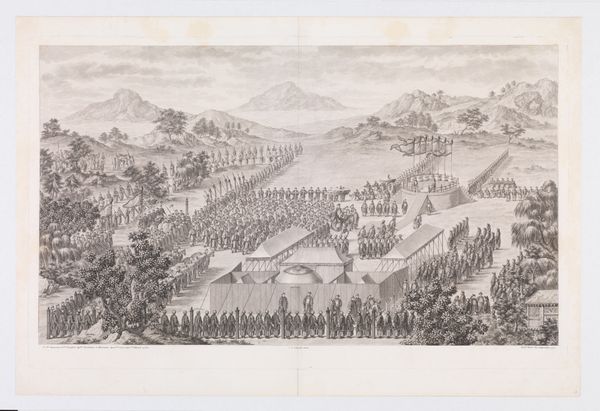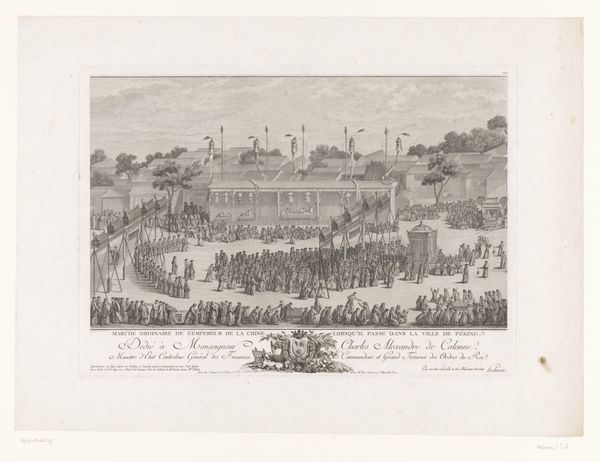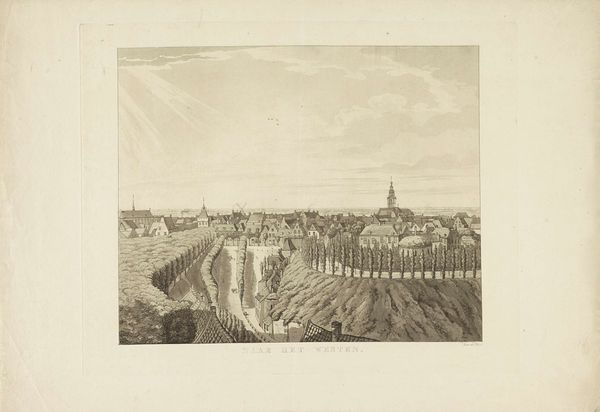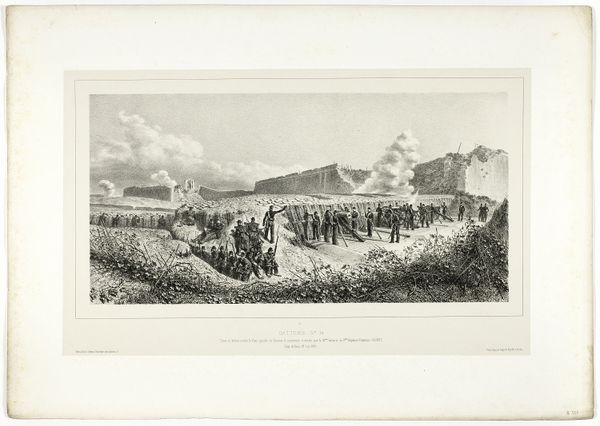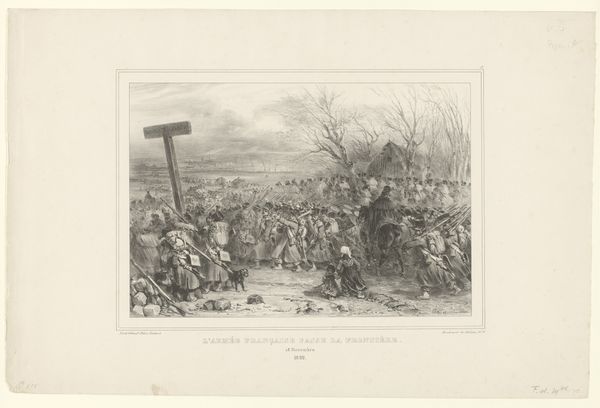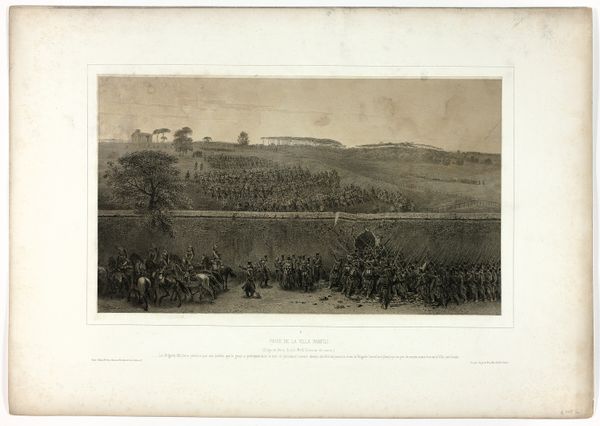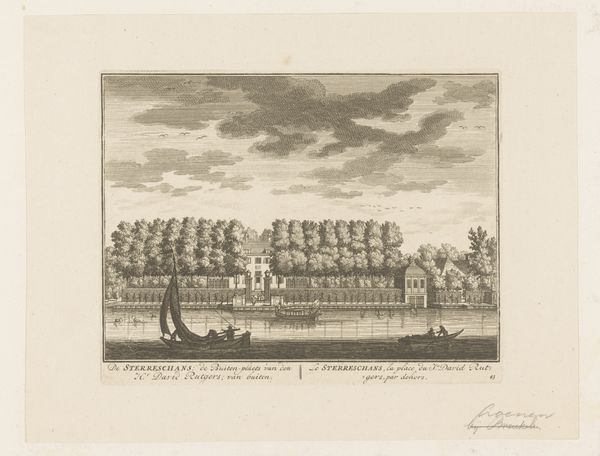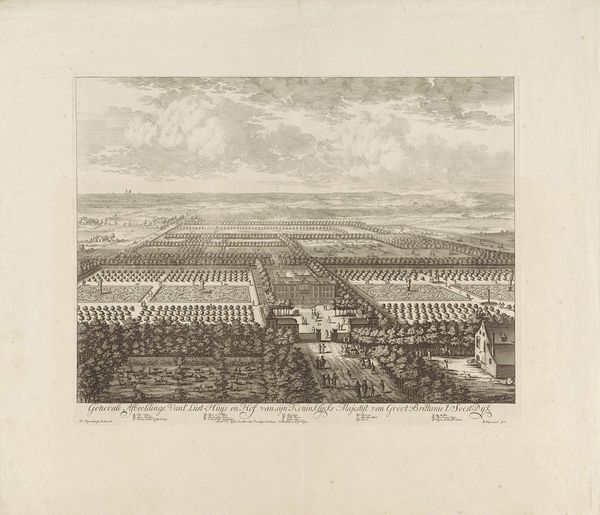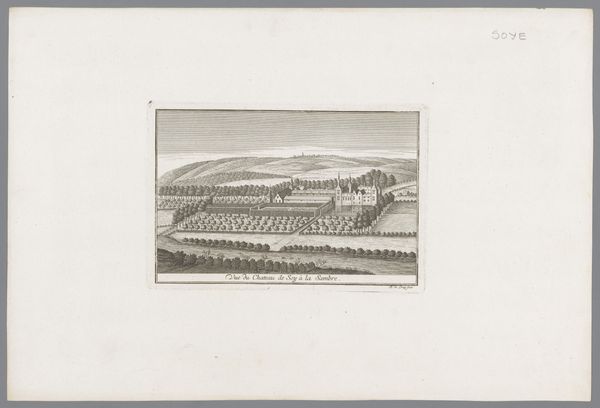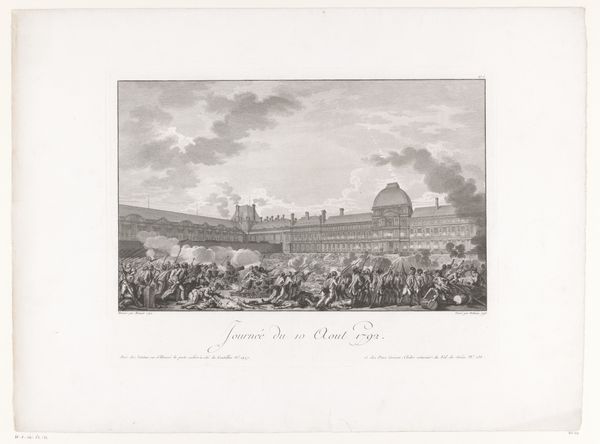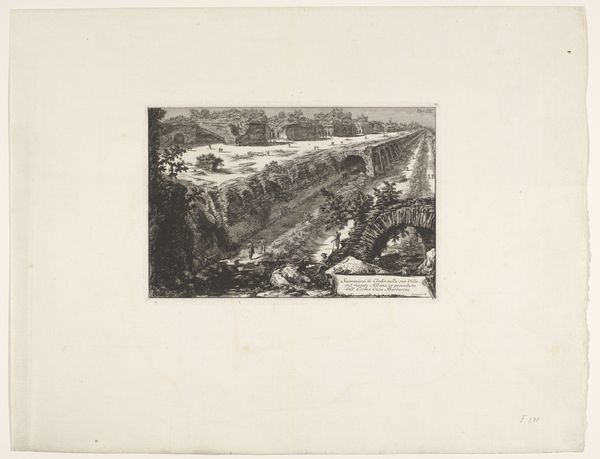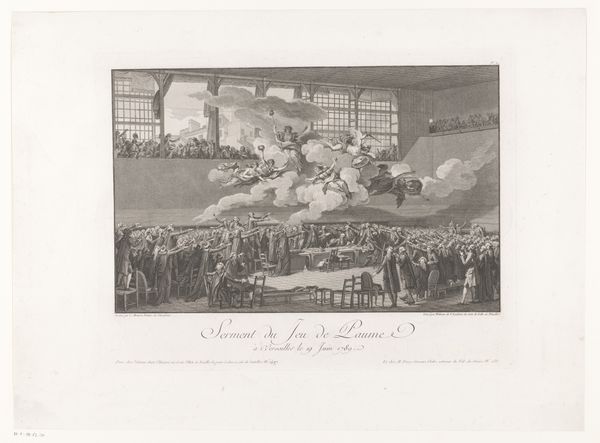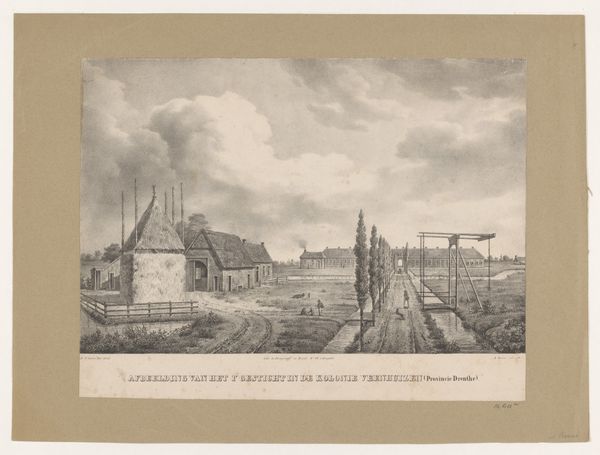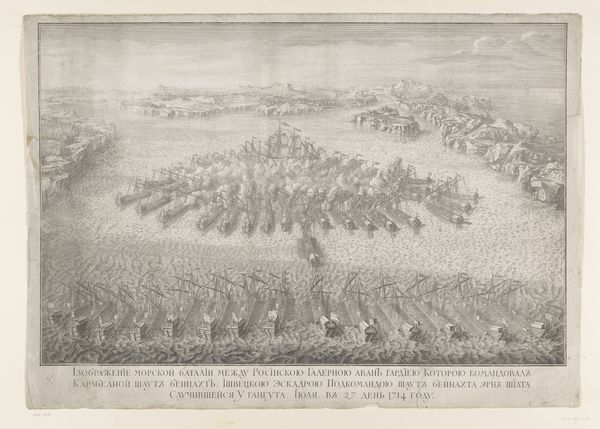
Eenjarig jubileum van de Franse Revolutie op de Champ-de-Mars 1793
0:00
0:00
print, engraving
#
neoclacissism
# print
#
pencil drawing
#
cityscape
#
history-painting
#
engraving
Dimensions: height 357 mm, width 466 mm
Copyright: Rijks Museum: Open Domain
Curator: Isidore-Stanislas Helman's print, commemorating the first anniversary of the French Revolution at the Champ de Mars, created in 1793 and held here at the Rijksmuseum, offers a window into a pivotal moment in European history. Editor: It's so densely packed with figures! The energy of the crowd almost jumps off the page. The eye is immediately drawn to the masses and the celebratory structure. Curator: Indeed. Consider how Helman uses the print medium to disseminate the ideals of the revolution to a broad audience. It depicts a carefully orchestrated event, designed to unify the nation around revolutionary principles. Look at the way the Champ de Mars becomes a stage for performing national identity. Editor: From a formal perspective, note the composition: the sharp lines of the architecture contrast with the swirling mass of people. The artist is very attentive to the use of light. Notice the highlights creating emphasis across the scene, guiding your eye through the chaos to different centers of attention. Curator: And that very chaos, as you call it, is deliberate. It represents the popular enthusiasm that fueled the Revolution. The strategic placement of the Triumphal Arch acts as a powerful symbol referencing Roman ideals of republicanism, thus adding historical weight to the proceedings. Editor: But doesn't this highly structured scene seem to mask underlying tensions? A teeming crowd like this suggests volatility. And what do you make of the way the figures in the foreground turn their backs on the viewer? They are part of the spectacle but removed. Curator: Precisely. By 1793, the revolution had entered a far more radical phase. This print, although outwardly celebratory, also subtly masks a time when the ideals of liberty were being challenged by realities of internal and external conflict, giving it a dark undercurrent of which these shadowy onlookers hint. Editor: Seeing the piece in terms of revolution through the lens of composition provides, I think, a way to analyze its visual grammar and how it attempts to legitimize the movement by referencing classical tropes in times of intense, societal shifts. Curator: A useful reminder that art serves multiple functions at once: documentation, propaganda, and, in moments like these, a desperate attempt to forge consensus when unity may have already been lost.
Comments
No comments
Be the first to comment and join the conversation on the ultimate creative platform.
